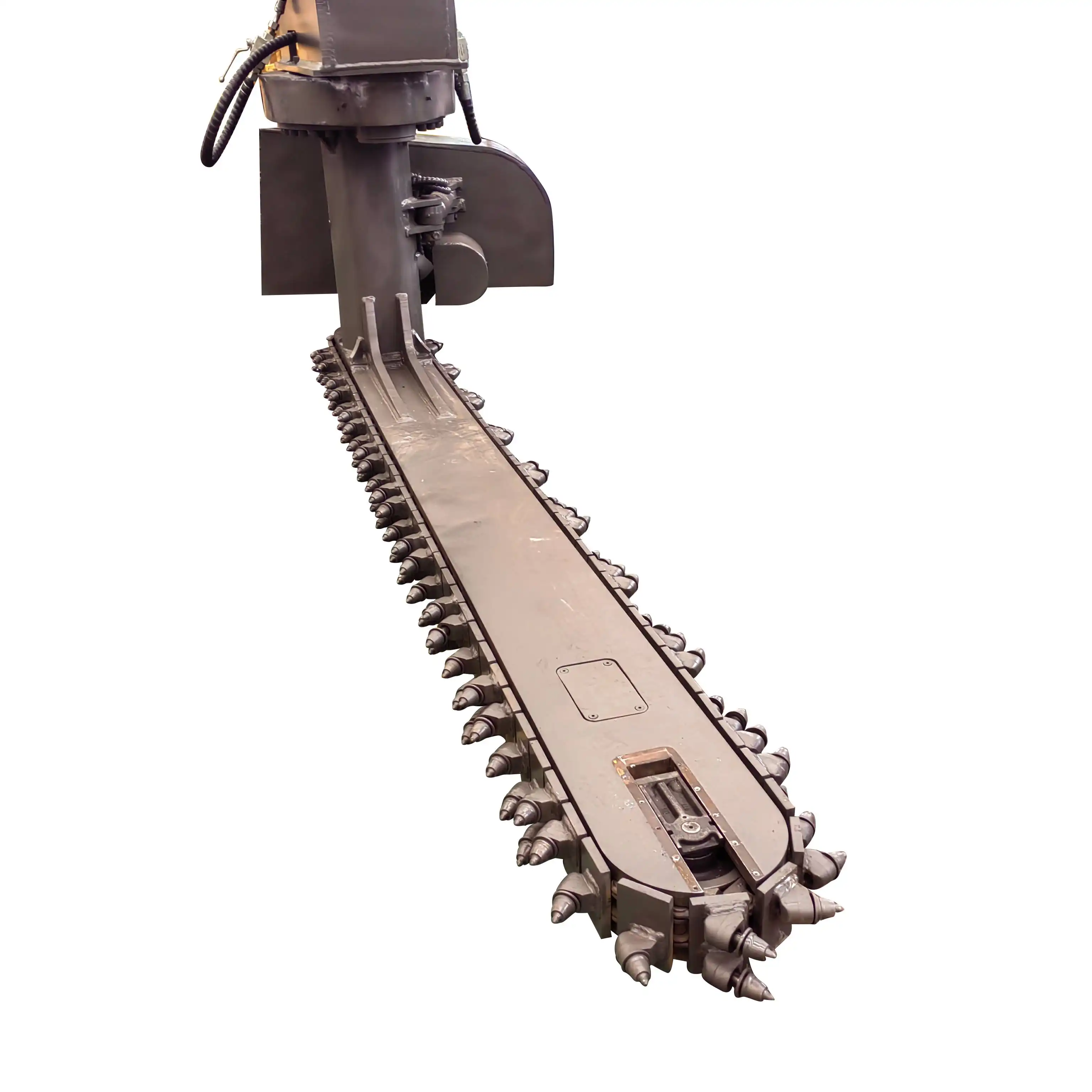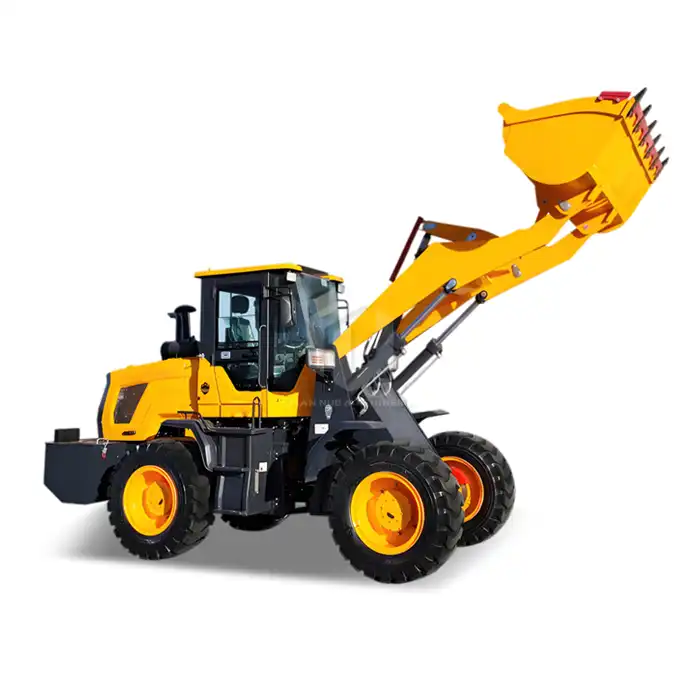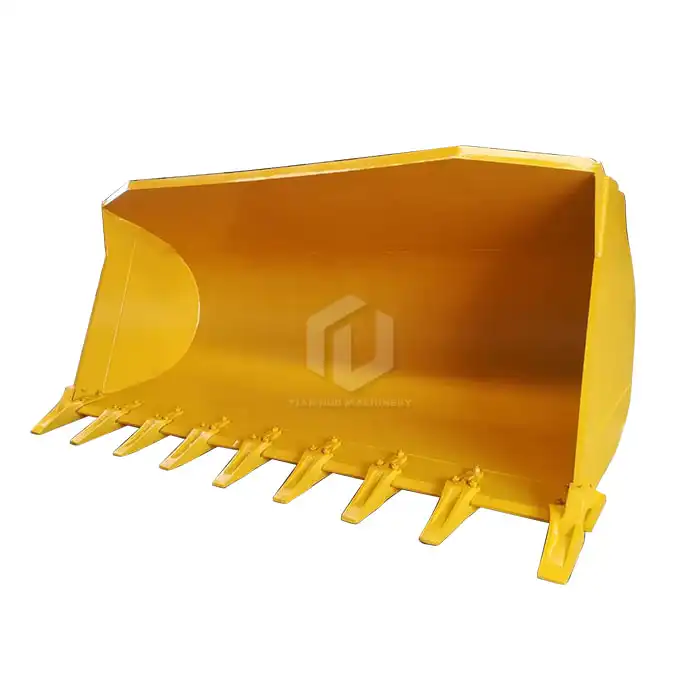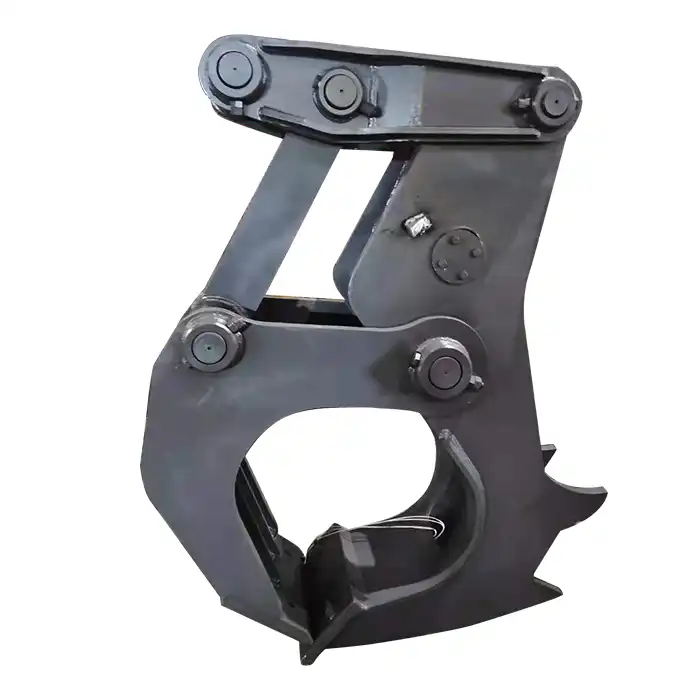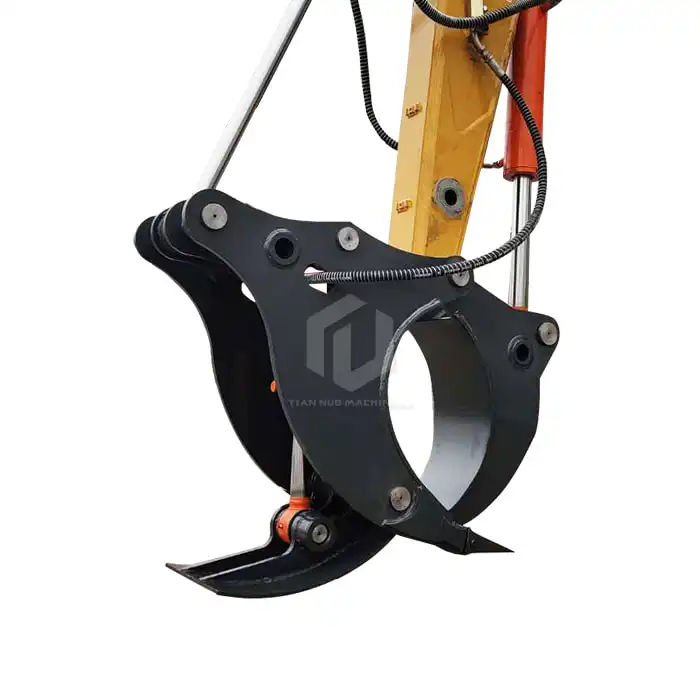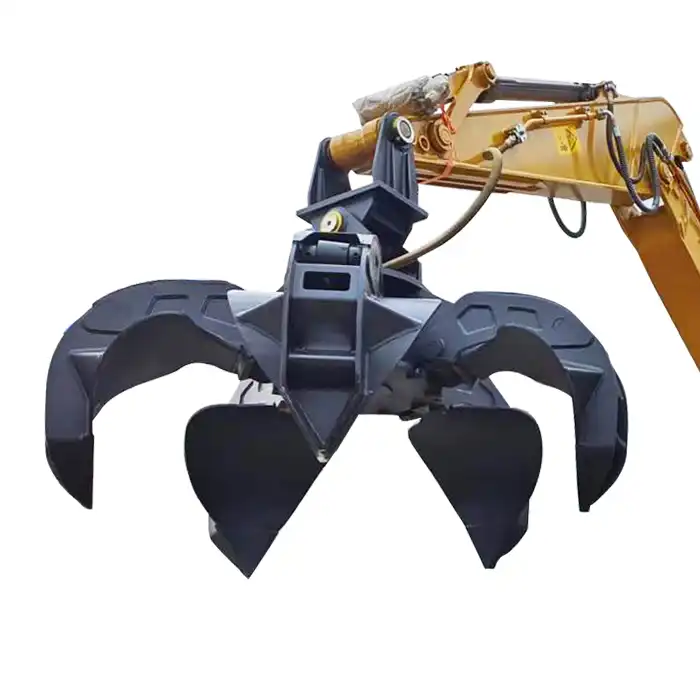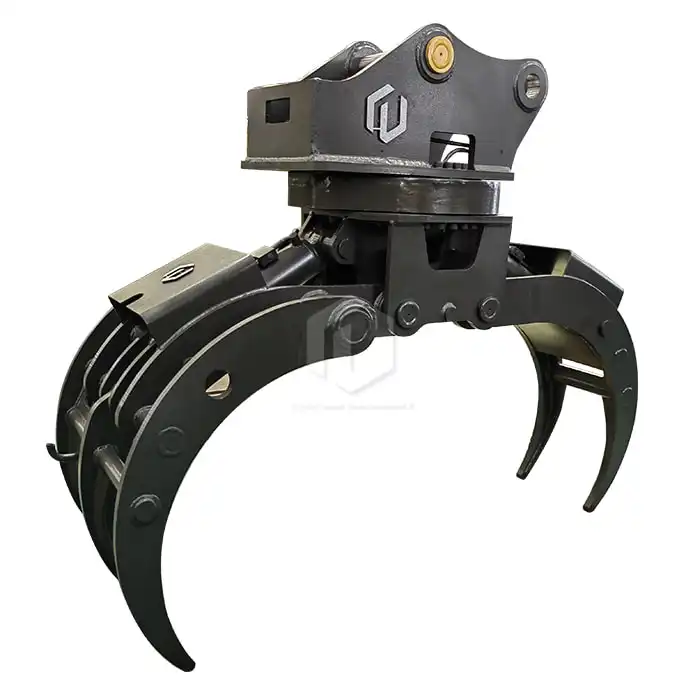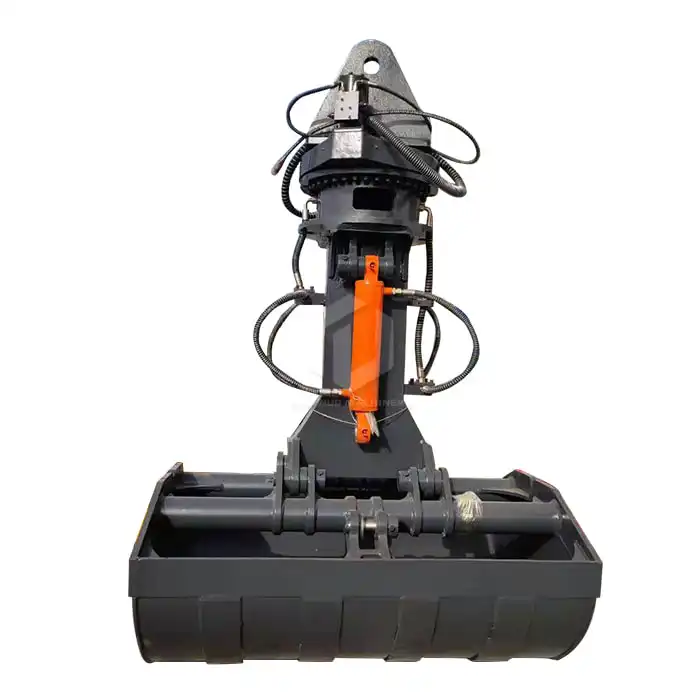What is the difference between a ripper for excavator and a subsoiler?
When it comes to earth-moving equipment, two tools that often cause confusion are the excavator ripper and the subsoiler. While both are designed to break up compacted soil, they serve different purposes and are used in distinct ways. In this comprehensive guide, we'll explore the key differences between these two implements, focusing on their function and purpose, operation depth, and design. By the end, you'll have a clear understanding of when and how to use each tool effectively.

Function And Purpose
The primary function of an excavator ripper is to break up hard, compacted soil or rock in preparation for excavation or other earthmoving tasks. Rippers are typically attached to the arm of an excavator and are used in construction, mining, and quarrying operations. They're particularly effective in areas where blasting is not feasible or permitted.
Excavator rippers are designed to penetrate and fracture tough materials, making them ideal for:
- Breaking up frozen ground
- Loosening compacted soil
- Ripping through rock layers
- Preparing sites for excavation
On the other hand, a subsoiler, also known as a deep tillage implement, is primarily used in agriculture. Its main purpose is to break up compacted soil layers below the surface without disturbing the topsoil. This process, called subsoiling or deep ripping, helps improve soil structure, water infiltration, and root growth.
Subsoilers are typically used for:
- Alleviating soil compaction
- Improving drainage in fields
- Enhancing root penetration for crops
- Increasing soil aeration
While both tools aim to break up soil, the excavator ripper is more suited for heavy-duty construction and mining tasks, whereas the subsoiler is designed for agricultural applications to improve soil health without major disturbance to the surface layer.
Operation Depth
One of the key differences between an excavator ripper and a subsoiler lies in their operational depth. This difference is directly related to their intended purposes and the environments in which they're used.
Excavator rippers are designed to work at various depths, depending on the size of the excavator and the specific ripper attachment. Generally, they can penetrate much deeper than subsoilers, with some capable of ripping to depths of:
- 3-5 feet (0.9-1.5 meters) for smaller excavators
- Up to 10 feet (3 meters) or more for larger machines
This deep penetration allows excavator rippers to break through hard rock layers and severely compacted soil, making them invaluable in construction and mining operations where significant earth removal is required.
Subsoilers, in contrast, typically operate at shallower depths. The working depth of a subsoiler usually ranges from:
- 12-24 inches (30-60 cm) for most agricultural applications
- Up to 36 inches (90 cm) for specialized deep ripping operations
The relatively shallower working depth of subsoilers is intentional. It allows farmers to break up compacted layers beneath the topsoil without bringing less fertile subsoil to the surface or disturbing the existing soil profile too drastically. This approach helps maintain soil structure while improving drainage and root penetration.
The difference in operating depth between excavator rippers and subsoilers reflects their distinct roles. Excavator rippers are built for power and deep penetration in tough conditions, while subsoilers are designed for precision work in agricultural settings, balancing soil improvement with minimal disturbance.
Design
The design of excavator rippers and subsoilers differs significantly, reflecting their specific functions and the environments in which they operate. Understanding these design differences is crucial for selecting the right tool for your project.
Excavator rippers are typically robust, single-tine implements designed to withstand extreme forces. Key design features include:
- A single, strong, replaceable tooth or shank
- Heavy-duty construction to handle high stress and impact
- Varied tooth angles for different soil conditions
- Attachment points compatible with excavator quick-couplers
The design of excavator rippers prioritizes strength and durability. The single tine concentrates force into a small area, maximizing penetration power. Some models feature adjustable shanks, allowing operators to change the angle of attack based on soil conditions or the specific task at hand.
Subsoilers, on the other hand, have a more complex design suited for agricultural use. Their key design elements include:
- Multiple tines or shanks (usually 3 to 7)
- Replaceable points on each shank
- Wings or plates to lift and fracture soil
- Adjustable working width
- Optional rollers or packer wheels
The multi-tine design of subsoilers allows for wider coverage in a single pass, improving efficiency in field operations. The shanks are typically curved or angled to minimize soil disturbance at the surface while effectively breaking up compacted layers below. Some advanced subsoiler designs incorporate hydraulic systems for adjusting tine depth on the go, providing greater flexibility in varying field conditions [3].
Another significant design difference is the mounting system. Excavator rippers are designed to be attached to the arm of an excavator, while subsoilers are typically mounted to the three-point hitch of a tractor. This difference reflects the mobility needs of construction sites versus the consistent working patterns in agricultural fields.
The contrasting designs of excavator rippers and subsoilers highlight their specialized roles. Excavator rippers are built for power and focused impact in tough conditions, while subsoilers are engineered for efficient, widespread soil improvement with minimal surface disturbance.
Excavator Ripper For Sale
In summary, while both excavator rippers and subsoilers are designed to break up compacted materials, they serve distinct purposes in different industries. Excavator rippers are powerful, deep-penetrating tools used in construction and mining for breaking up hard soil and rock. Subsoilers, on the other hand, are agricultural implements designed for improving soil structure without disturbing the topsoil. The choice between these tools depends on the specific requirements of your project, the depth of operation needed, and the industry you're working in.
If you're in the market for a high-quality excavator ripper, look no further than Tiannuo Machinery. Our excavator rippers boast strong digging and cutting abilities, making them convenient for loosening sections and easily separating soil and rock to reduce cutting resistance. Designed for easy disassembly and replacement, our rippers offer a prolonged lifespan, ensuring you get the most value for your investment.
Ready to enhance your excavation capabilities? Don't hesitate to reach out to our team of experts. Contact our manager at arm@stnd-machinery.com, or get in touch with our team members at rich@stnd-machinery.com and tn@stnd-machinery.com. Let Tiannuo Machinery be your partner in productivity and efficiency!
References:
[1] Spoor, G., Tijink, F. G. J., & Weisskopf, P. (2003). Subsoil compaction: risk, avoidance, identification and alleviation. Soil and Tillage Research, 73(1-2), 175-182.
[2] Raper, R. L. (2005). Agricultural traffic impacts on soil. Journal of Terramechanics, 42(3-4), 259-280.
[3] Godwin, R. J. (2007). A review of the effect of implement geometry on soil failure and implement forces. Soil and Tillage Research, 97(2), 331-340.

